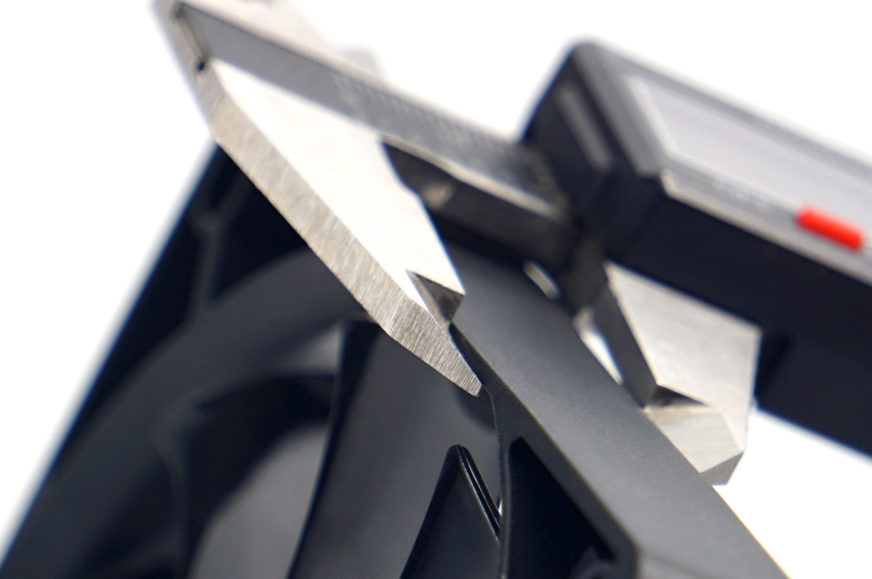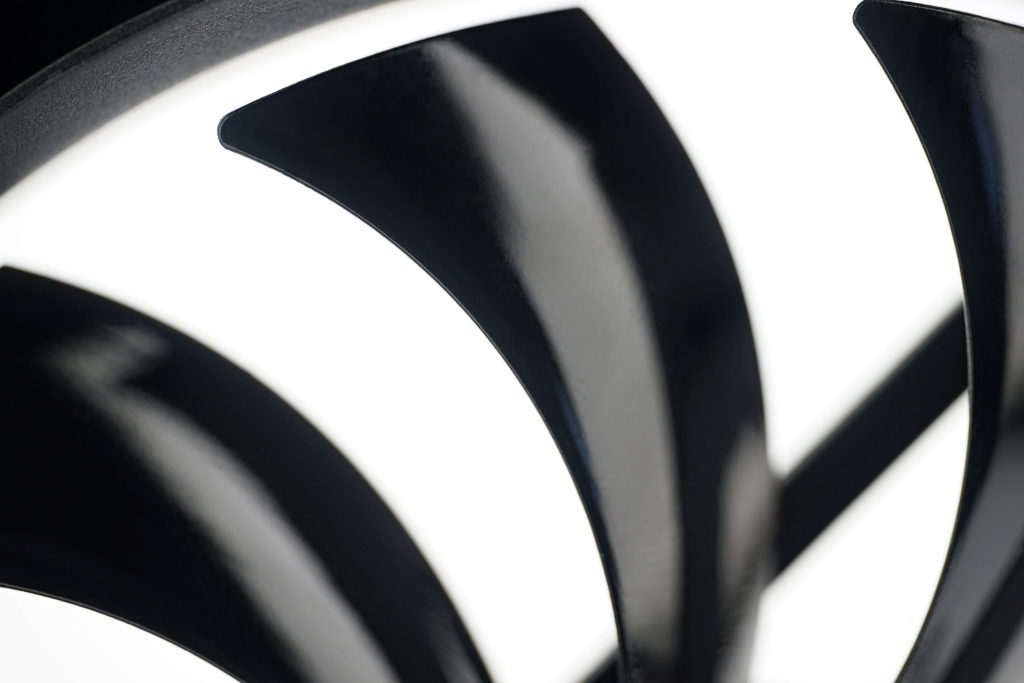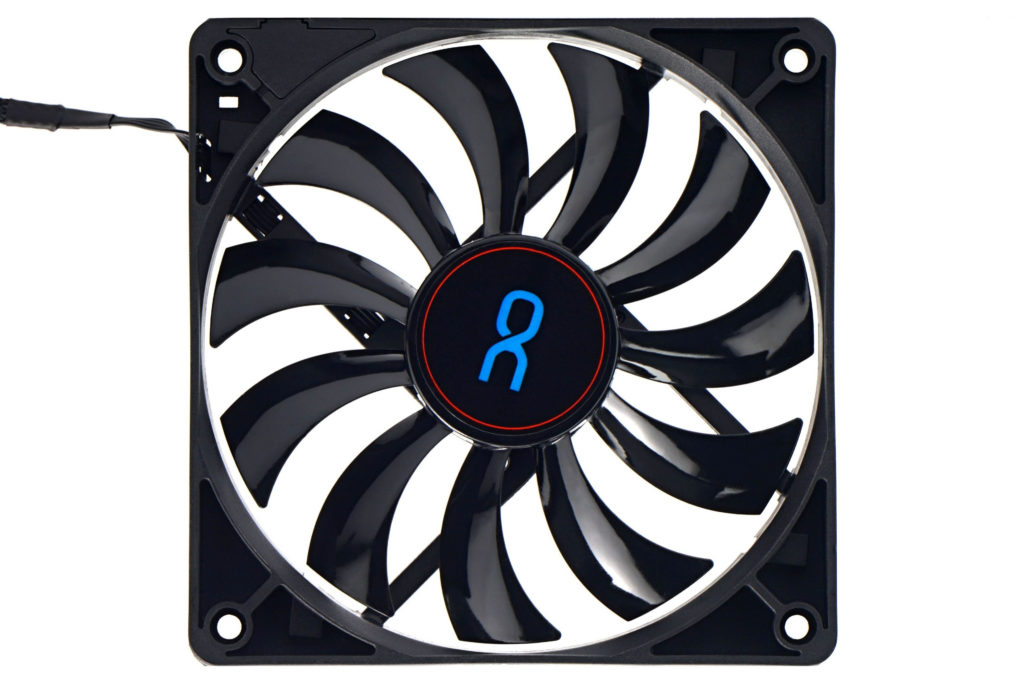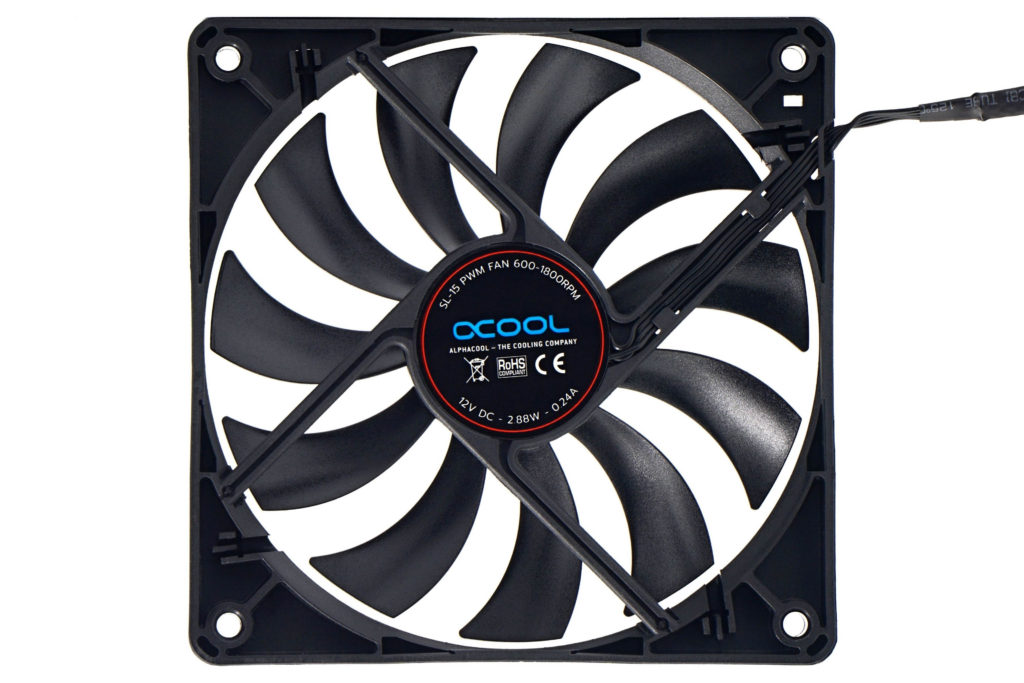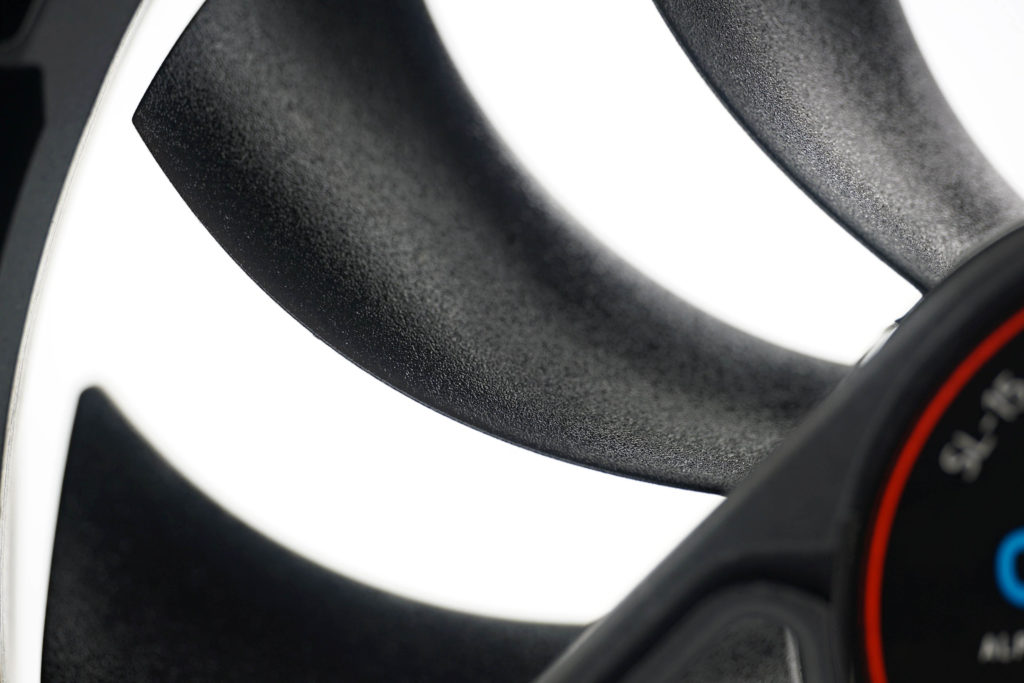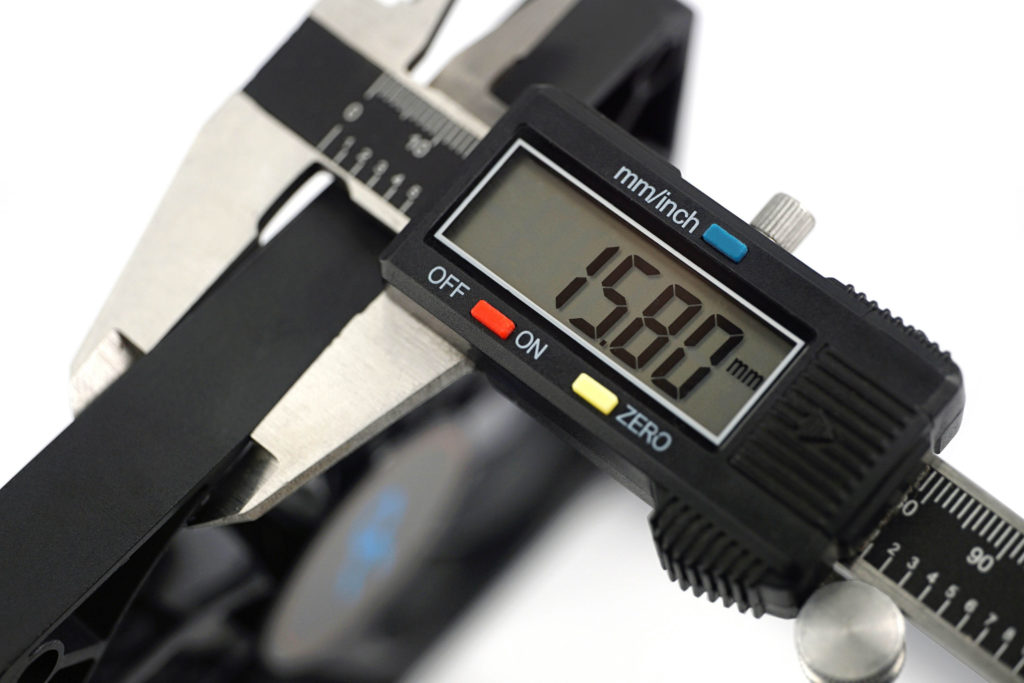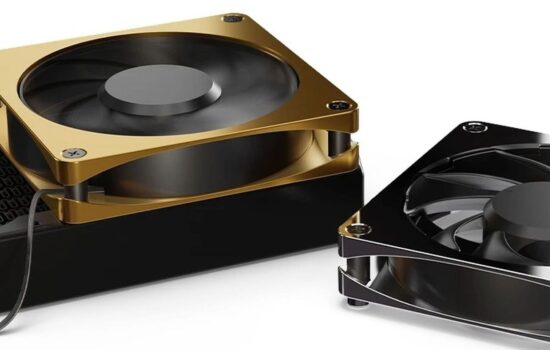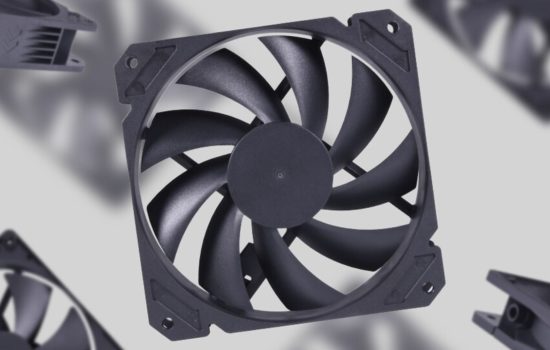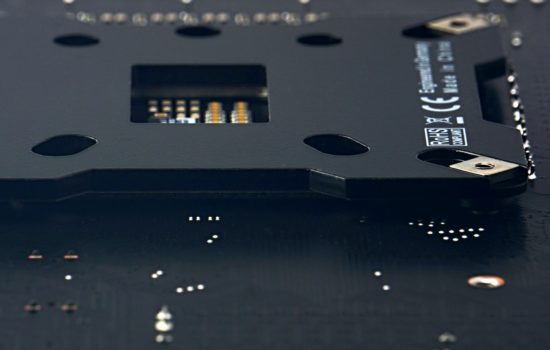Details of Alphacool SL-15 PWM
There are situations where standard 25 mm fans will not fit. Even the 120 mm format therefore offers lower alternatives. The first thing that naturally comes to mind is that such fans mean a trade-off in cooling efficiency. However, this may not be true and the hassle of thinking about how to fit a thicker fan inside may even be quite unnecessary. A well-designed rotor can achieve fully-fledged results when compared to a thicker rotor, even if it is slimmer.
Narrow PC cases or low top panels. Low profile fans are often required for such conditions. PC cases (for system cooling) are typically slim, width-oriented. However, thin fans can also be used in large cases. Typically on liquid cooler radiators to be placed above the motherboard, where the free space is often below 52 mm. This means that either the radiator (27 mm) or the fans (25 mm) must be narrower than normal, and sometimes a combination of both components is required.
And there would be some more atypical situations, where you need to reach for 15 mm thick fans (narrower fan on a tower cooler can better avoid memory modules than a thicker one). Therefore, we will make a review in this segment as well. We’ve got a few different models lined up, of which the Alphacool SL-15 makes the most sense for us to start with for a number of reasons. It’s definitely not a bad fan, but it does have its flaws that can be overcome, but first and foremost it’s important to point them out.
| Brand and model of fan | Paper specicifations * | Price [EUR] | ||||||||
| Format (and thickness) in mm | Connecting | Speed [rpm] | Airflow [m3/h] | Static pressure [mm H2O] | Noise level [dBA] | Bearings | MTBF [h] | |||
| Motor | RGB LED | |||||||||
| Alphacool SL-15 PWM | 120 (15) | 4-pin (PWM) | N/A | 600–1800 | 71.40 | 1.20 | 32.0 | ball | 50 000 | 11 |
| Arctic BioniX F120 | 120 (25) | 4-pin (PWM) | N/A | 200–1800 | 117.00 | 2.10 | 20.0 | fluid | N/A | 10 |
| SilverStone SST-AP123 | 120 (25) | 3-pin (DC) | N/A | 1500 | 96.84 | 1.46 | 23.8 | fluid | 50 000 | 25 |
| Noctua NF-P12 redux-1700 PWM | 120 (25) | 4-pin (PWM) | N/A | 400–1700 | 120.20 | 2.83 | 25.1 | SSO | 150 000 | 13 |
| SilentiumPC Fluctus 120 PWM | 120 (25) | 4-pin (PWM) | N/A | 300–1800 | N/A | N/A | N/A | fluid | 100 000 | 12 |
| MSI MEG Silent Gale P12 | 120 (25) | 4-pin (PWM) | N/A | 0–2000 | 95.48 | 2.21 | 22.7 | hydrodynamic | 50 000 | 31 |
| Asus ROG Strix XF120 | 120 (25) | 4-pin (PWM) | N/A | 1800 | 106.19 | 3.07 | 22.5 | „MagLev“ | 400 000 | 23 |
| Akasa Vegas X7 | 120 (25) | 4-pin (PWM) | 4-pin (12 V) | 1200 | 71.19 | N/A | 23.2 | fluid | 40 000 | 11 |
| Reeven Coldwing 12 | 120 (25) | 4-pin (PWM) | N/A | 300–1500 | 37.54–112.64 | 0.17–1.65 | 6.5–30.4 | sleeve | 30 000 | 12 |
| Reeven Kiran | 120 (25) | 4-pin (PWM) | shared | 400–1500 | 110.10 | 2.95 | 33.6 | fluid | 120 000 | 17 |
| SilentiumPC Sigma Pro 120 PWM | 120 (25) | 4-pin (PWM) | N/A | 500–1600 | 79.00 | N/A | 15.0 | hydraulic | 50 000 | 7 |
| SilentiumPC Sigma Pro Corona RGB 120 | 120 (25) | 4-pin (PWM) | 4-pin (12 V) | 1500 | 56.58 | N/A | N/A | hydraulic | 50 000 | 12 |
| SilverStone SST-AP121 | 120 (25) | 3-pin (DC) | N/A | 1500 | 60.08 | 1.71 | 22.4 | fluid | 50 000 | 18 |
| SilverStone SST-FQ121 | 120 (25) | 7-pin (PWM) | N/A | 1000–1800 | 114.68 | 0.54–1.82 | 16.4–24.0 | PCF (fluid) | 150 000 | 20 |
| Xigmatek XLF-F1256 | 120 (25) | 3-pin (DC) | N/A | 1500 | 103.64 | N/A | 20.0 | „long-life“ | 50 000 | 16 |
* When reading performance values, a certain tolerance must always be considered. For maximum speeds, ±10% is usually indicated, minimum speeds can vary considerably more from piece to piece, sometimes manufacturers will quote as much as ±50%. This must then also be adequately taken into account for airflow, static pressure and noise levels. If only one value is given in a table cell, this means that it always refers to the situation at maximum speed, which is achieved at 12 V or 100% PWM intensity. The manufacturer does not disclose the lower limit of the performance specifications in its documentation at that time. The price in the last column is always indicative only.
The fan has up to eleven blades. Their total surface area will thus not be significantly smaller than that of a 7-blade fan with a centimeter more depth. The blades on the Alphacool SL-15 are quite subtle, being only one millimeter thick. But more importantly, apart from the higher risk of breaking when colliding with another object, they change their shape differently while running due to the greater thermal expansion. And because the rotor is light overall, it is also more significantly (than more massive rotors) hindered by the resistance of an obstacle.
In static pressure measurements, due to the high environmental resistance, its maximum speed dropped by up to 350 rpm (from 1870 rpm) even though the fan power consumption increased by 170 mW. A similar pattern of behavior (decrease in speed, increase in power consumption) always occurs with all fans, but here the differences are more significant and therefore worth pointing out.
The parameters that Alphacool lists are rather strange. This is because different speeds are quoted and consequently different airflow rates are achieved. However, we consider the more frequently mentioned range of 600–1800 rpm to be indicative. But you will also find a range of 1500–1950 rpm in the technical details. It’s hard to say what it refers to, and it’s quite possible that it’s just a paperwork error that got mixed up in the table from some other fan.
You can see it in the photos, but we will also mention it in the text just in case—the rotor finish is glossy from the front and matt from the back. The fan frame is robust, unlike the blades. For this reason, the total weight is above standard for this format, “up to” 93 grams.
The thickness of the bezel (15.8 mm) is a little closer to 16 than 15 mm. Don’t be surprised by the atypical design of the mounting holes, which have a significantly enlarged neck on the front side. This is in order to allow a deep immersion of the header (probably so that it would not be visible, hence the aesthetic issue).
But if you don’t want to and can’t immerse the header because there is a grille in front of the fan, then even the otherwise long, 12 mm screws may not grip properly. Through our grille’s millimeter sheet metal, the attachment was wobbly, apparently only on the first thread. It had a tendency to overtighten, even though the grille was somehow held on the fan. It’s a half-baked solution anyway, and if you’re considering the Alphacool SL-15 as an inlet fan, beware. From the other side, the holes are already conventional, the thread is cut right away, so mounting in the case outlet will be fine under any circumstances.
The cable is 355 mm long (without the connector, which is 4-pin—PWM) and braided with fabric. And a solid one at that, including tight and deeply seated shrink tubing on both sides. This should be a given, but it’s not always the case. Let’s also mention the presence of a ball bearing. Alphacool claims an MTBF value of 50,000 hours.
- Contents
- Details of Alphacool SL-15 PWM
- The basis of the methodology, the wind tunnel
- Mounting and vibration measurement
- Initial warm-up and speed recording
- Base 7 equal noise levels…
- .. and sound color (frequency characteristic)
- Static pressure measurement…
- … and airflow
- Everything changes with obstacles
- How we measure power draw and motor power
- Measuring the intensity (and power draw) of lighting
- Results: Speed
- Results: Airlow w/o obstacles
- Results: Airflow through a nylon filter
- Results: Airflow through a plastic filter
- Results: Airflow through a hexagonal grille
- Results: Airflow through a thinner radiator
- Results: Airflow through a thicker radiator
- Results: Static pressure w/o obstacles
- Results: Static pressure through a nylon filter
- Results: Static pressure through a plastic filter
- Results: Static pressure through a hexagonal grille
- Results: Static pressure through a thinner radiator
- Results: Static pressure through a thicker radiator
- Results: Static pressure, efficiency by orientation
- Reality vs. specifications
- Results: Frequency response of sound w/o obstacles
- Results: Frequency response of sound with a dust filter
- Results: Frequency response of sound with a hexagonal grille
- Results: Frequency response of sound with a radiator
- Results: Vibration, in total (3D vector length)
- Results: Vibration, X-axis
- Results: Vibration, Y-axis
- Results: Vibration, Z-axis
- Results: Power draw (and motor power)
- Results: Cooling performance per watt, airflow
- Results: Cooling performance per watt, static pressure
- Airflow per euro
- Static pressure per euro
- Results: Lighting – LED luminance and power draw
- Results: LED to motor power draw ratio
- Conclusion





